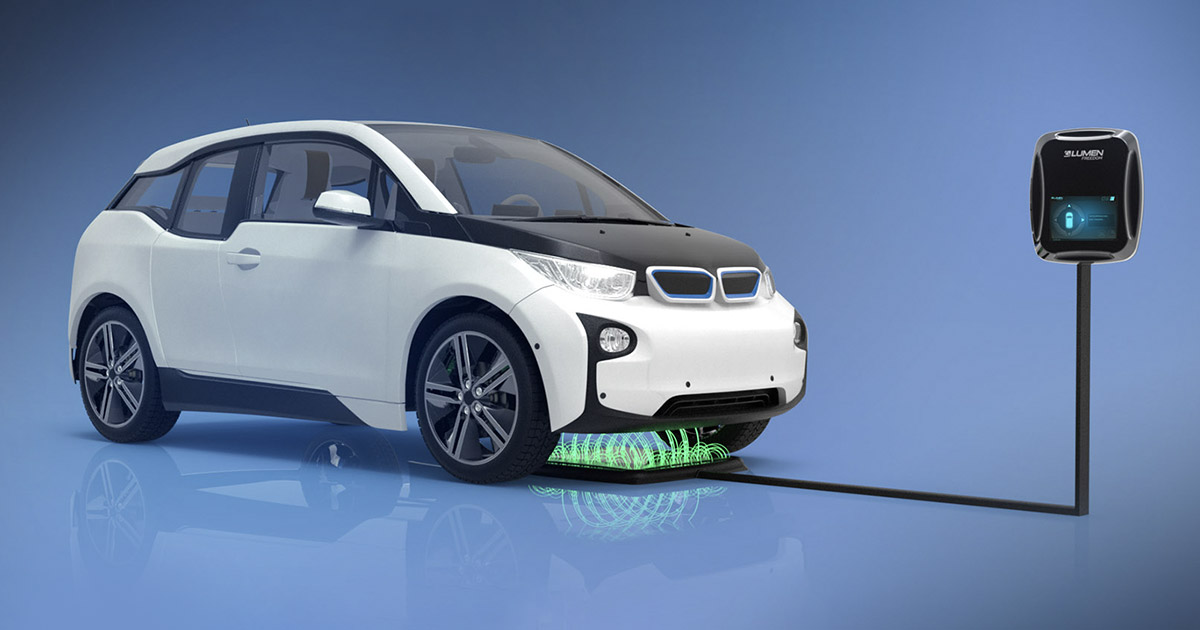How Wireless Charging Works
Wireless charging works through electromagnetic induction between two coils – a transmitting pad located in the charging infrastructure and a receiving pad located in the vehicle. When an electric current is passed through the transmitting coil, it creates an alternating electromagnetic field. The receiving coil located in the vehicle picks up on these magnetic fields and an electric current is generated without any physical connection between the vehicle and charging point.
This contactless form of power transfer is most commonly used with standards like SAE’s J2954 which employs low frequencies around 80-300 kHz for safety and efficiency. With Wireless Electric Vehicle Charging, drivers can simply park their EVs over a charging pad sitting flush in the ground or garage floor without having to plug in a cable. An integrated or aftermarket receiving coil installed in the vehicle picks up the magnetic field and charges the high voltage battery.
Benefits of Wireless Charging for EVs
The main advantages of wireless EV charging include convenience, safety, and future potential for dynamic and on-the-go charging. Not having to deal with cables makes the process much more seamless and eliminates issues like wet or dirty connectors. It also removes the need to open vehicle charge ports, reducing the risk of moisture or dust ingress into high voltage systems.
For users, wireless charging creates a truly plug-free experience without the hassle of handling high voltage cables. This improves usability and allows even non-technical drivers to easily charge their EVs. The contactless nature also enhances safety by fully isolating high voltage circuits during charging.
Long term, wireless technology opens up possibilities for dynamic charging during motion. Inductive roads or overhead systems could continuously charge EVs while driving to extend range virtually limitlessly. This could help solve challenges for electric trucks, buses and other commercial EVs that rely on dependable high daily mileages.
Wireless Charging Infrastructure Rollout
Several automakers are now offering factory-installed wireless charging options on new EVs, led by BMW, GM, Toyota and others. Aftermarket retrofit kits are also available to bring the feature to existing cars. On the infrastructure side, EV charging network ChargePoint recently acquired WiTricity, a wireless charging tech company, signaling the technology is gaining commercial traction.
In Europe, the Innovation and Networks Executive Agency (INEA) of the EU is co-funding several wireless charging pilot projects across member states under the EVcharging program. This includes highway dynamic charging trials in Sweden and Italy’s installation of 500 wireless chargers across 65 cities.
Asia too is investing heavily with the Korean government targetting 6,000 wireless chargers nationwide by 2022. China’s State Grid Corporation of China is working on a “Digital Silk Road” project with 2,000 wireless spots across its highway network.
USA has been slower to adopt but states like California and Colorado have ongoing wireless charging pilots. The International Standards and Conformity Assessment for Automotive (ISO/IEC 21459) published in 2020 will help encourage widespread wireless EV charging infrastructure globally.
Key Challenges of Wireless EV Charging
While the convenience of wireless charging is undeniable, there are also challenges holding back more widespread adoption currently. Chief among these is cost – wireless systems require more complex electronics compared to plug-in charging. Transmitter pads and receiver coils add thousands more to the price of infrastructure and vehicles compared to simple cables and ports.
Efficiency is also lower with wireless due to energy lost as heat during inductive power transfer. Plug-in charging achieves around 85-90% efficiency versus 75-80% for current wireless systems. This requires larger battery capacities to achieve the same usable range. Advances like magnetic resonance charging improved efficiency but increased costs.
Other issues include foreign object detection risks from metal objects placed on charging pads, potential interference with other electronic devices, and limitation of charging power to 3.3-11kW for passenger EVs today due to coil size constraints inside vehicles.
As with all new technologies, costs will come down substantially with mass production and further technical progress. Larger coils now allow for 22kW inductive charging speeds. New magnetic resonance and separated coil designs promise efficiencies above 90% matching wired charging. Continuous charging roads could provide limitless range solving capacity barriers for commercial EVs.
In the near to mid future, wireless charging will remain a niche premium option to provide added convenience. But with worldwide pilot projects underway and support from automakers, the integration with vehicles is happening. As more affordable standard equipment especially on next-gen EVs, wireless charging will likely become commonplace in the latter half of this decade. It represents the true seamless mobility experience that will accelerate mass EV adoption globally.
*Note:
1. Source: Coherent Market Insights, Public sources, Desk research
2. We have leveraged AI tools to mine information and compile it


